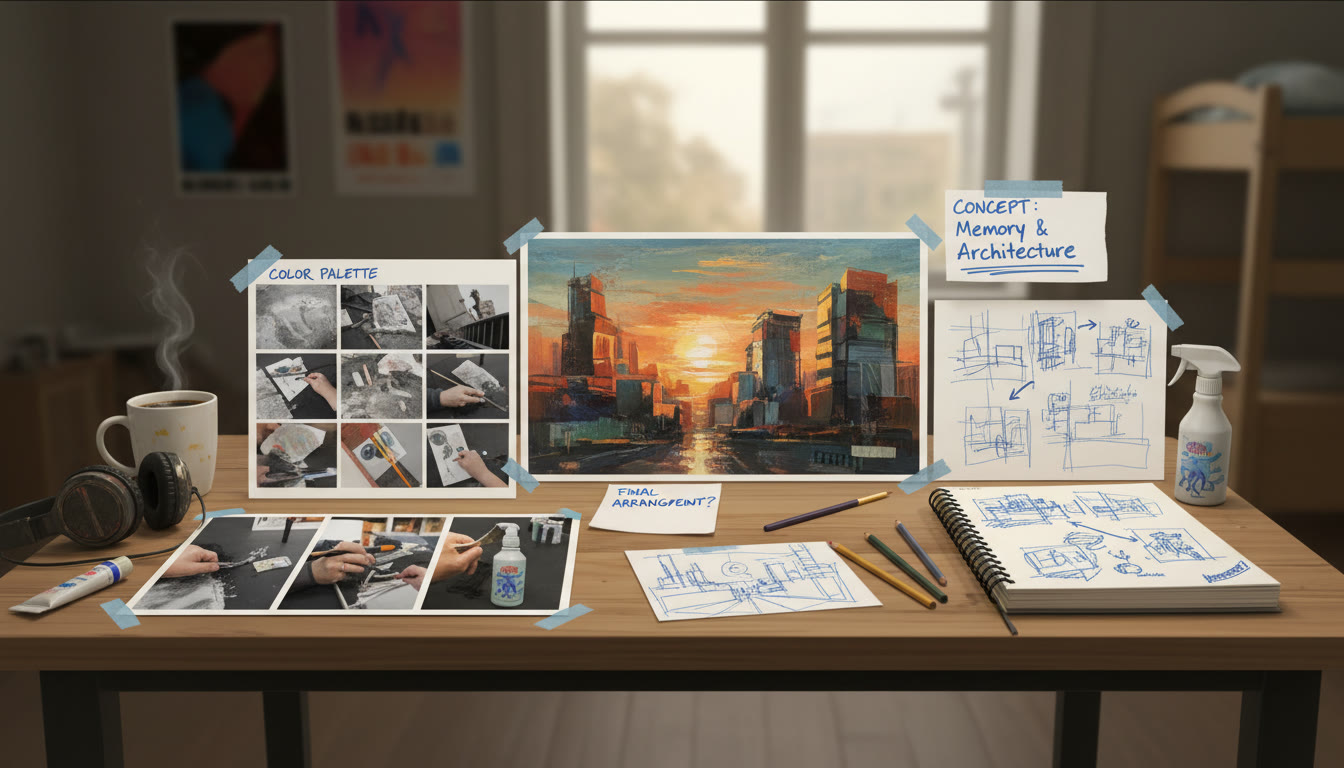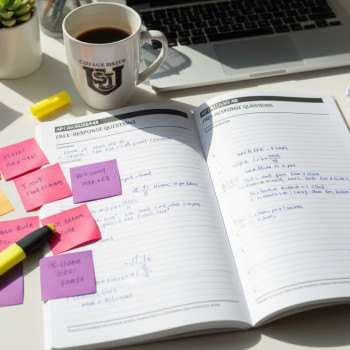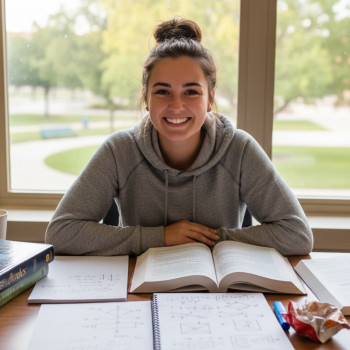Why This Journey Matters: CBSE Fine Arts Students Considering AP
For many students in the CBSE system, Fine Arts isn’t just an elective — it’s a place to experiment, tell stories, and develop a visual voice. When the idea of pursuing AP (Advanced Placement) Fine Arts or related AP studio courses comes up, families often ask: “Is this a straight swap?” “Will my work be valued the same way?” The short answer is: yes — but with nuance.
This blog explains how moving from CBSE Fine Arts into AP frameworks is less about changing the essence of your creativity and more about refining the practice of iteration and intentional risk-taking. We’ll cover practical steps, sample timelines, portfolio tips, and how targeted support — like Sparkl’s personalized tutoring — can make the transition smoother without stealing the student’s authentic voice.
Understanding the Two Worlds: CBSE Fine Arts vs AP
Curriculum and Assessment: Different Lenses on Creativity
CBSE Fine Arts often emphasizes breadth — historical context, traditional techniques, and the relationship between form and cultural practice. AP courses, particularly AP Studio Art (or AP 2-D/3-D Design and Drawing), are assessment-driven with a strong focus on portfolio evidence: sustained investigation, breadth, and quality of work demonstrated across a year.
In practical terms, CBSE may reward knowledge and craft across set themes, whereas AP asks for a demonstrable process that shows how ideas evolve and how risks lead to stronger outcomes.
Key Differences That Matter to Students
- Evidence of Process: AP portfolios ask for visible iteration — not only finished pieces but the steps you took, experiments, failures, and refinements.
- Intentional Risk-Taking: AP assessors value thoughtful risks. Trying a new medium or concept (and reflecting on it) can be more persuasive than technically flawless but safe work.
- Self-Directed Investigation: AP favors student-led themes. While CBSE projects can be teacher-directed, AP rewards a student’s independent voice and inquiry.
- Documentation and Reflection: AP requires written reflections and clear documentation of your process — evidence that your work is purposeful.

Iteration: The Engine That Turns a Good Idea into Great Work
What Iteration Really Means in Art
Iteration isn’t repetition for repetition’s sake. It’s a structured cycle: propose an idea, test, observe outcomes, reflect, and refine. In the context of moving from CBSE to AP, iteration becomes your proof — the visual story that shows how a concept developed over time.
Concrete Steps to Build Iteration into Your Practice
- Time-Boxed Experiments: Give yourself short challenges — e.g., one day to explore texture with household materials, two days to shoot references, a week to make three thumbnails. Rapid cycles reveal which approaches are promising.
- Keep a ‘Process Log’: Photograph stages, note materials and decisions, and write a short reflection (even a single sentence) about what you learned from each attempt.
- Compare Iterations Side-by-Side: Lay out early, middle, and late versions to spot shifts in idea, technique, and intent — this comparison is gold for AP portfolios.
- Set Micro-Goals: Instead of “Make a final painting,” set “Resolve composition problem in three thumbnails” or “Push color palette toward a risk I’ve avoided.”
Example: From Sketch to Portfolio Piece
Imagine a student begins with a CBSE assignment about community festivals. To make that into an AP-style body of work, they might:
- Start with thumbnails exploring composition and narrative emphasis.
- Test mixed-media approaches (photography layered with ink) to see what best conveys atmosphere.
- Document 6–8 iterations, note what choices deepen the theme, then produce a final series showing progression.
Risk-Taking: How to Take Smart Creative Risks
Why Risk Matters
Risk is the difference between predictable work and memorable work. In AP assessment, risk doesn’t mean reckless novelty — it means making deliberate choices that stretch conceptually or technically and then learning from the outcomes.
Types of Productive Risks
- Material Risk: Using unfamiliar materials (e.g., projecting photography onto fabric, combining printmaking with digital manipulation).
- Conceptual Risk: Addressing a complex or personal theme rather than a safe, broadly appealing subject.
- Scale Risk: Changing scale drastically — working very small or very large to explore perception.
- Process Risk: Choosing a constrained method (limited palette or single tool) to force creative problem-solving.
How to Make Risks Safer and Smarter
Frame risks as experiments with defined evaluation points. Decide up front what success looks like and when you’ll stop or pivot. For instance, set a rule: try a new medium in three small studies before committing to a major piece.
Sparkl’s personalized tutoring approach can be useful here: a tutor helps students design low-stakes experiments, set checkpoints, and reflect on outcomes — accelerating learning while preserving creative autonomy.
Portfolio Strategy: Telling the Story of Your Creative Growth
The AP Portfolio Structure (Practical Guide)
AP Studio Art portfolios typically ask for these components: Quality (your strongest pieces), Breadth (range of approaches), and Concentration/Sustained Investigation (in-depth exploration of a central idea). Translating CBSE projects into this structure requires documenting process, demonstrating risk, and showcasing thematic depth.
| Portfolio Section | What It Shows | How CBSE Work Can Be Adapted |
|---|---|---|
| Quality | Best, refined pieces | Choose CBSE final pieces that show technical skill; refine them further with iterative studies. |
| Breadth | Range of techniques and ideas | Include experiments from CBSE classes and new media studies to demonstrate versatility. |
| Concentration | Deep exploration of a theme | Build a narrative from multiple CBSE projects or expand a CBSE theme into a year-long investigation. |
Documentation Checklist for Each Piece
- Title, medium, size, and date.
- Photos of in-progress stages (at least 3 per major work).
- Short reflection (50–150 words) explaining intent and what changed between stages.
- Notes on risks taken and what was learned.
Sample Timeline: One Academic Year to an AP-Ready Portfolio
Semester 1 — Exploration and Documentation
- Months 1–2: Audit your CBSE portfolio. Identify 6–8 promising works and gaps.
- Months 3–4: Run focused experiments (material, scale, concept). Document everything.
- Month 5: Choose a sustained investigation theme and begin concentrated work.
Semester 2 — Refinement and Presentation
- Months 6–7: Produce final pieces for quality and breadth sections.
- Months 8–9: Assemble documentation, write reflections, and sequence pieces for narrative flow.
- Final Month: Mock review with teacher/tutor; make final adjustments and prepare submission materials.
Classroom to College: How Iteration and Risk Reflect on Applications
Admissions Officers Read Process as Seriously as Product
Colleges often want to see the arc of a student’s creativity. A portfolio that shows iterative thinking and bold, well-justified risks tells a richer story than a collection of isolated, technically proficient works. It demonstrates curiosity, resilience, and the ability to engage in sustained inquiry — qualities that matter beyond the studio.
How to Talk About This in Statements and Interviews
- Frame failures as experiments: briefly explain what you learned and how you adjusted.
- Highlight the decision points: why did you switch mediums, alter composition, or scrap an idea?
- Connect classroom assignments to independent inquiry: show how a CBSE project sparked a larger AP investigation.
Tools and Practices That Help Students Iterate Faster
Low-Cost Tools With High Impact
- Smartphone camera with a consistent backdrop and good lighting for documenting stages.
- Sketchbook with dated entries — consistency beats perfection.
- Digital workspace (simple folders named by project and date) to track versions.
Practice Habits That Build Creative Confidence
- Daily micro-practice: 15–30 minutes of quick studies focused on a single problem.
- Weekly critiques: share iterations with peers or a tutor and collect feedback.
- Reflection ritual: after finishing a piece, answer three prompts — What worked? What surprised me? What next?
When to Seek Extra Guidance (And What That Looks Like)
Signs a Student Would Benefit from Tutoring
- Difficulty translating CBSE projects into a cohesive AP portfolio narrative.
- Lack of structure around documenting process and reflections.
- Hesitation to take creative risks or to test unfamiliar materials.
How Personalized Tutoring Helps — Thoughtfully and Respectfully
Targeted support can accelerate progress without replacing the student’s voice. For example, Sparkl’s personalized tutoring offers 1-on-1 guidance, tailored study plans, and expert tutors who help students design iterative experiments and document risk-taking thoughtfully. Tutors can coach on sequencing portfolio images, refining artist statements, and preparing for reviews — all while encouraging student-led exploration.
Practical Examples: Three Mini Case Studies
Case Study 1 — The Printmaker Who Broadened Her Range
A CBSE student with strong block-printing skills used AP-style iteration to layer photo transfers over prints. Small experiments revealed how light interacted with ink; documentation of failed transfers became a learning centerpiece in the portfolio. The risk (introducing unexpected photographic textures) paid off by adding a conceptual layer to technical skill.
Case Study 2 — The Sculptor Who Embraced Constraints
A tactile-focused student set a constraint: create work only from reclaimed cardboard for six weeks. The restriction forced inventive joins and surface treatments. The portfolio showed a clear progression from crude joins to refined, interlocking structures — a neat narrative of iteration and problem-solving.
Case Study 3 — From Documentary Sketches to Themed Investigation
A student in CBSE documented local markets through sketches. For AP, they turned this into a sustained investigation on exchange and labor, incorporating mixed-media collages and interview-sourced text. The process notes, small collages, and iterative layout studies strengthened the final series and the accompanying reflection.
Common Pitfalls and How to Avoid Them
Pitfall 1: Saving Process Work Only When It ‘Looks Good’
Solution: Document everything. Early failures often show risk and growth more clearly than polished final versions.
Pitfall 2: Mimicking Trends Instead of Finding a Voice
Solution: Use trends sparingly as technical study; always ask “Why this?” and “How does this serve my idea?”
Pitfall 3: Overworking Pieces to Hide Weaknesses
Solution: Set an iteration limit for each piece (e.g., three major revisions) and then move on — the goal is evidence of process, not obsessive polishing.
Checklist: Final Review Before Submitting an AP-Style Portfolio
- Do you have clear evidence of iteration for key pieces? (Photos, notes, sketches)
- Is there a logical narrative between works that supports a sustained investigation?
- Have you documented risks and reflected honestly on outcomes?
- Does the portfolio include both breadth and quality across media and approaches?
- Have you run a mock review with a teacher, mentor, or qualified tutor?

Final Words to Students and Parents: Growth Over Perfection
Moving from CBSE Fine Arts to an AP framework is less a leap and more a refinement: you already have curiosity, craft, and cultural grounding. AP asks you to make that creative life legible — to show not just what you made, but how and why you arrived there.
Iteration and risk-taking are practices you can learn. They’re habits more than innate talents. Start small: document more, try one deliberate risk per month, and reflect often. If you want tailored support, a mentor or personalized tutoring — for example, Sparkl’s 1-on-1 guidance and AI-driven insights — can help you design experiments, structure your documentation, and build a portfolio that is both authentic and assessment-ready.
Remember: admissions and assessors don’t just reward polished surfaces. They reward curiosity, resilience, and the courage to iterate. That’s the art you’ll carry far beyond any classroom.
Encouragement
Keep making, keep failing, and keep telling the story of how you learned. The portfolio that shows honest growth is the one that resonates.




















No Comments
Leave a comment Cancel